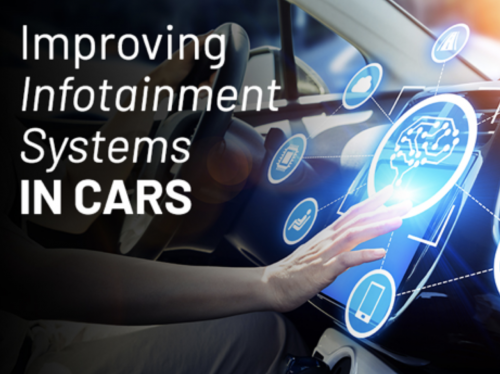
Today, almost all new vehicles include an “infotainment” system that controls both entertainment and practical functions. A majority of infotainment systems are touchscreen, but some manufacturers have returned to more traditional buttons and dials due to poor user experience or malfunctions. Touchscreen systems can still offer users easy control with a simple touch when the right materials are used.
Innovation of Infotainment Technology
Early models of the touchscreen, in-car infotainment system began emerging in the early 2000s. About a decade later, the rise of apps and the ability to connect to Wi-Fi increased the popularity and functionality of infotainment systems. Users could connect their smartphones via Bluetooth, use their favorite navigation app, stream music, and connect to other apps and entertainment.
Most infotainment systems also control key functions of the car, like backup cameras, heating and cooling, and driving settings, making proper touchscreen capabilities even more crucial. Unfortunately, in-car touchscreen technology hasn’t always been easy to utilize or navigate for drivers.
Infotainment Systems Shortcomings
According to the J.D. Power 2020 Initial Quality Study, about 25% of consumers cite that all issues with a new vehicle relate to infotainment, with the highest dissatisfaction being with how difficult they are to use. Some in-car infotainment systems can have complicated menu navigation, faulty or lagging touch interfaces, poor graphic displays, or other issues that not only frustrate users but can also create unsafe, distracted driving conditions.
While Tesla has always used touchscreens for their vehicles’ functions, other car companies are taking a variety of approaches to address this issue. Mazda removed touchscreen systems in newer models starting with their 2019 Mazda 3, and Audi is beginning to utilize haptic technology instead of traditional touchpads or buttons for a more tactile touchscreen experience.
Considerations for Manufacturers
Despite the increased use of touchscreens in daily life, there is an opportunity for improvement for in-car touchscreen technology. Fortunately, high-quality coatings and optical adhesive films are available to manufacturers to help improve touch recognition and durability as touchscreen infotainment systems continue to improve.
Transcontinental Advanced Coatings produces coatings and films for a wide range of industries, including personal and commercial touchscreen products. All of our products are manufactured in ISO 9001-certified facilities to deliver excellent quality to our customers. Fill out our online form to partner with us today.